








Wet and warm swamps spread along the equator. They were habitats for gigantic flying insects and for the first vertebrate animals that lived entirely outside of water.

358 M YA and onwards
Calamites trees (horsetails)
Seed fern
The dominant swamp plants were tree-sized club mosses and ferns. Once the plants died, they decayed, became buried and slowly turned into coal. Since the 18th century, coal has been mined and burned to create electricity and heat homes.
Delitzschala is the oldest known winged insect and had a wingspan of around 2.5 centimetres.
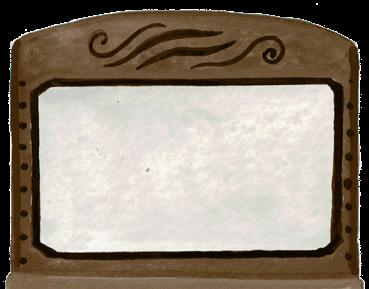



Developing embryo Liquid-filled sac Egg casing



Land vertebrates evolved an exciting evolutionary step – the amniotic egg. This egg had a casing with a liquid-filled sac inside that allowed the developing young to float. The evolution of the amniotic egg freed vertebrates from the water and allowed them to take advantage of habitats on land. This process was similar to how plants evolved to live on land.
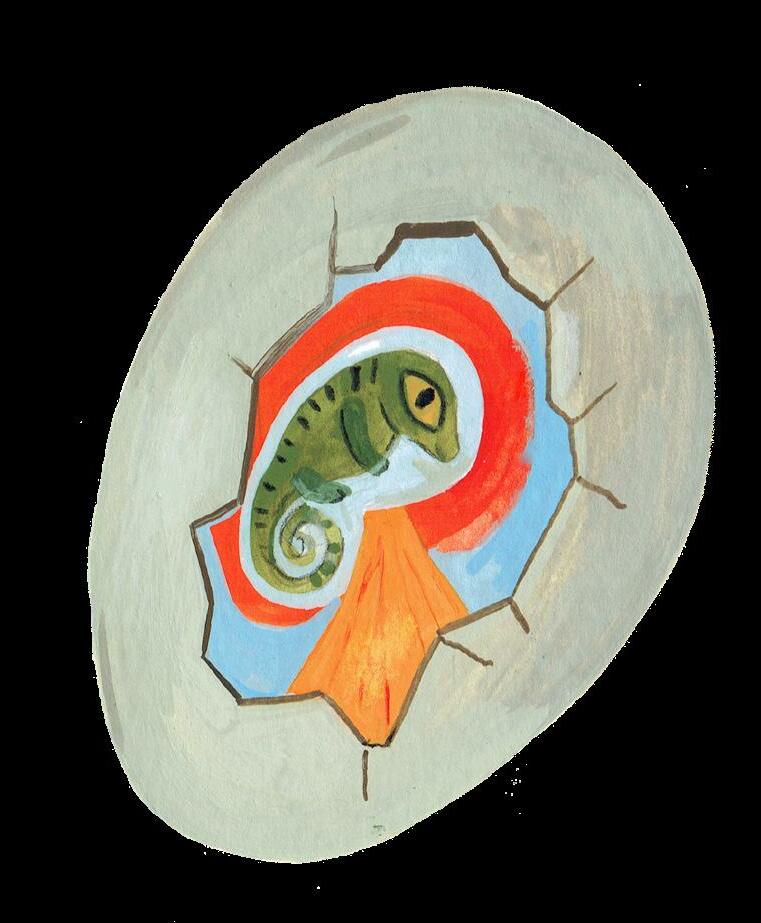


About 348 M YA STEP-BY-STEP
Psaronius, tree fern
The transition of some vertebrate animals from water to land was a gradual process, but by the Early Carboniferous, the first fully land-living vertebrates had evolved. These vertebrates had strong limbs and backbones that could support their bodies out of water. Having eyes on top of their heads also helped to improve their vision on land.
The largest dragonfly (Meganeura) had a wingspan of 70 centimetres.
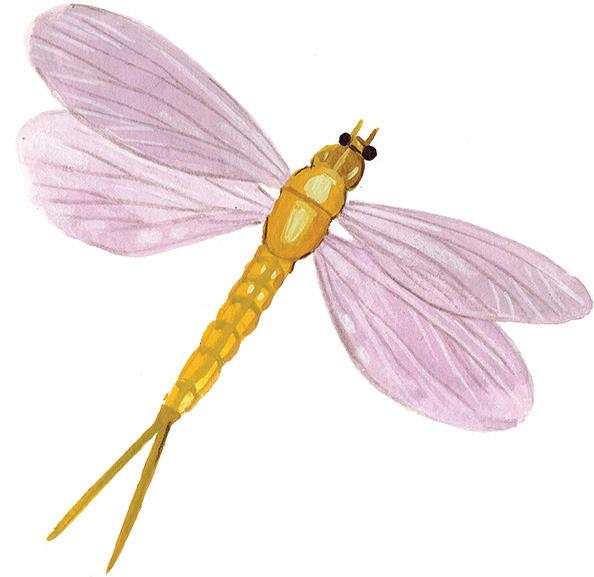
325 M YA
Although insects already existed by the Devonian, during the Carboniferous they formed many new species and spread far and wide. Insects were the first animals to evolve flight.
5
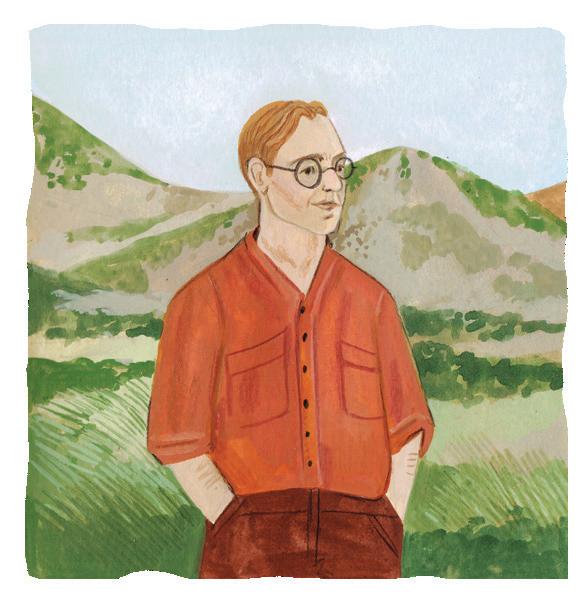




About 323.2–298.9





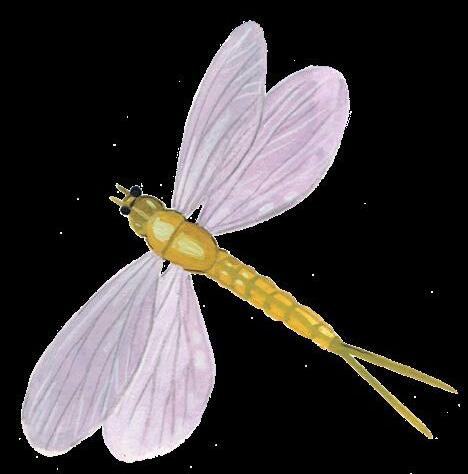
During this period, some arthropods (creatures with an exoskeleton) were enormous and there are several theories as to why this happened. Scientists know that there were higher levels of oxygen in the atmosphere at the time, most likely caused by the photosynthesis from the widespread swamp plants. So one theory is that this oversupply of oxygen allowed insects and other arthropods to evolve larger bodies. Another theory is that there were no flying predators to spot and eat the ones that grew larger.
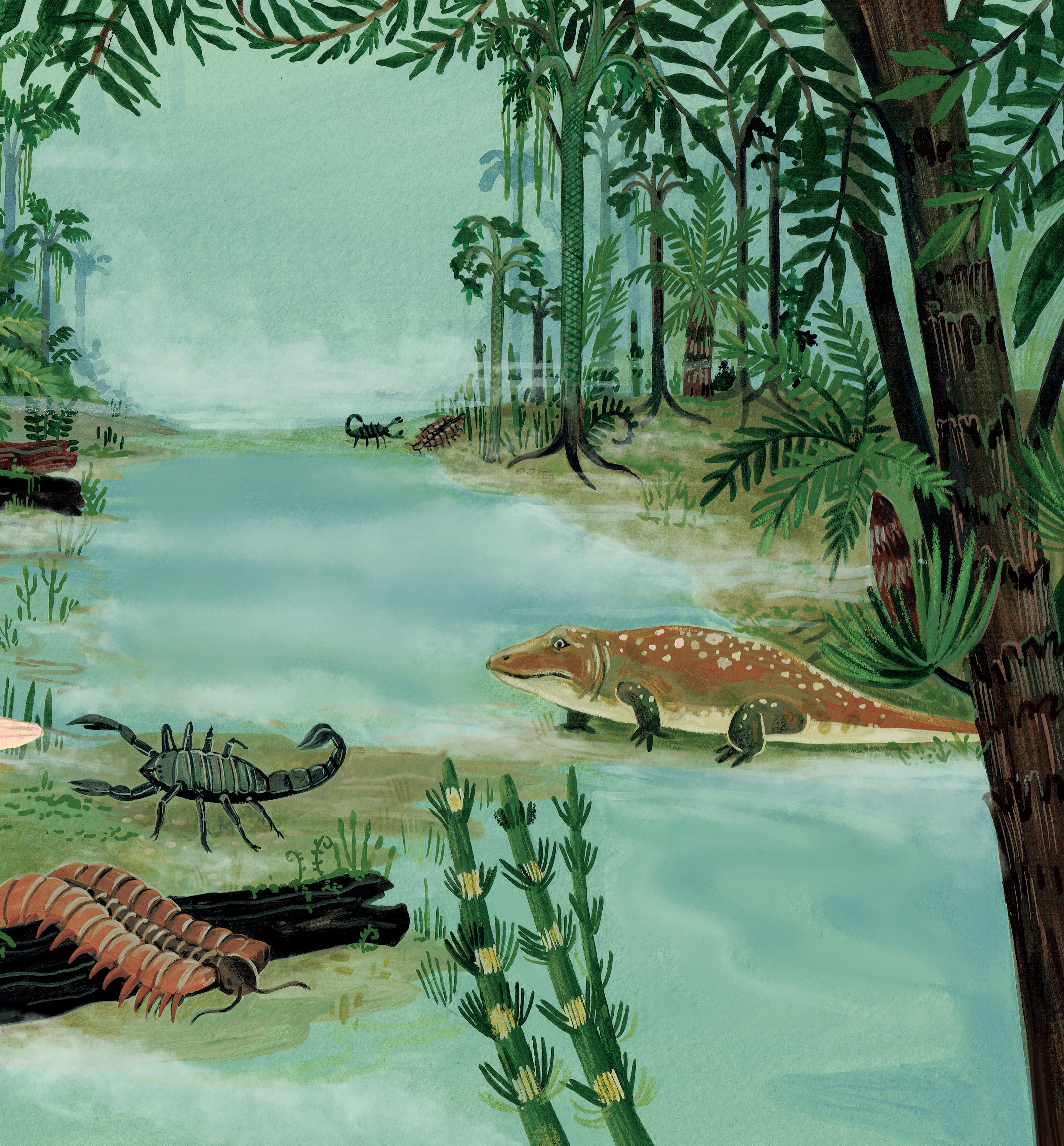
Over a long time, dead swamp plants gathered and were fossilized as coal. They became a natural storage for carbon dioxide, preventing it from being released into the atmosphere. Less carbon dioxide in the atmosphere led to global cooling (again!). Glaciers spread and almost reached the equator. With more water locked up as ice, the sea level dropped. At the same time, the continents moved closer together, the climate became drier and the lush swamps gradually shrank. Many plants died out, including the tree-like horsetails.
The scorpion Pulmonoscorpius was up to 70 centimetres long.
Amphibians were among the first vertebrates that lived most of their life on land. Modern amphibians are small creatures like frogs and toads, but they were once enormous. Like frogs today, they laid their eggs in water and their young had gills. These tadpoles transformed into adults with lungs to live on land.
Millipedes such as this Arthropleura grew to 2.4 m long.
Earth's climate has constantly changed throughout history. Climate describes overall weather conditions and patterns, like temperature and rainfall, which happen over a long time. Weather refers to a particular event, for example a sunny day or a storm. The changes in our climate have been caused by several natural processes and, more recently, by humans.
Some of the heat from the Sun bounces off Earth's surface.
Earth is the right temperature for life because certain gases in the atmosphere hold in the Sun's heat, just like the glass in a greenhouse does. During Earth's history, these greenhouse gases, such as carbon dioxide and methane, were released by volcanic eruptions and other natural processes. When the amount of greenhouse gas went down, the Earth cooled. When the amount went up, the Earth got hotter.
For the past three million years, Earth has been alternating between ice ages and warm periods. These periods are caused by changes in the Earth’s distance to the Sun, which affects the amount of sunlight that reaches the Earth. Some of these changes happen roughly in 100,000-year cycles called Milankovitch cycles.
PIONEERING PEOPLE
The Milankovitch cycles were named after MILUTIN MILANKOVITCH (1879–1958). He calculated how Earth’s orbit and the tilt of Earth’s axis changed the incoming heat of the Sun. This explained the causes of the ice ages and his calculations are still used today.

Sun Earth's axis Light and heat from the Sun Sun Sun
1. The Earth's axis is always tilted, but the angle of tilt changes every 41,000 years. When the angle is larger, Earth's polar regions lean closer to the Sun, receiving more sunlight and heat in summer. When the angle is smaller, Earth leans away from the Sun and receives less sunlight and heat.
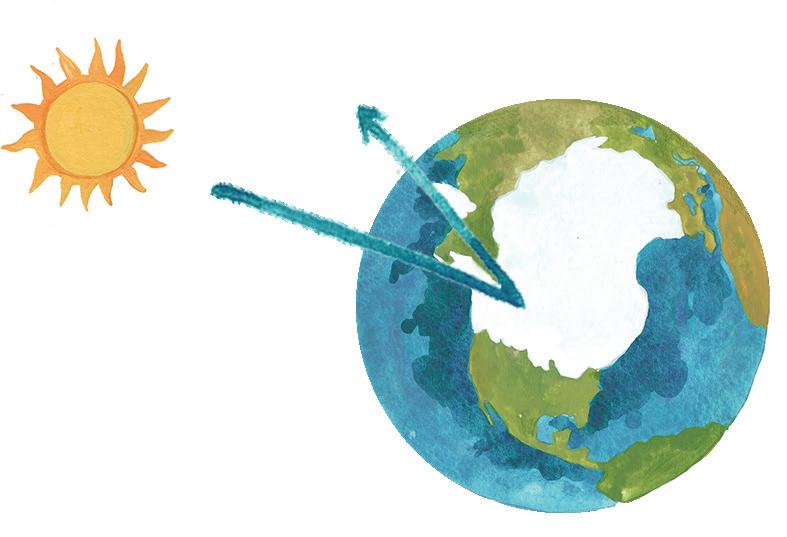
2. Earth’s axis also rotates and can wobble like a spinning top. This wobble also affects the angle of the Earth towards the Sun.
3. Earth’s orbit – the path that it takes around the Sun – has an effect too. Sometimes the orbit is circular, but sometimes it becomes more oval shaped, which brings Earth closer to and sends it further away from the Sun.
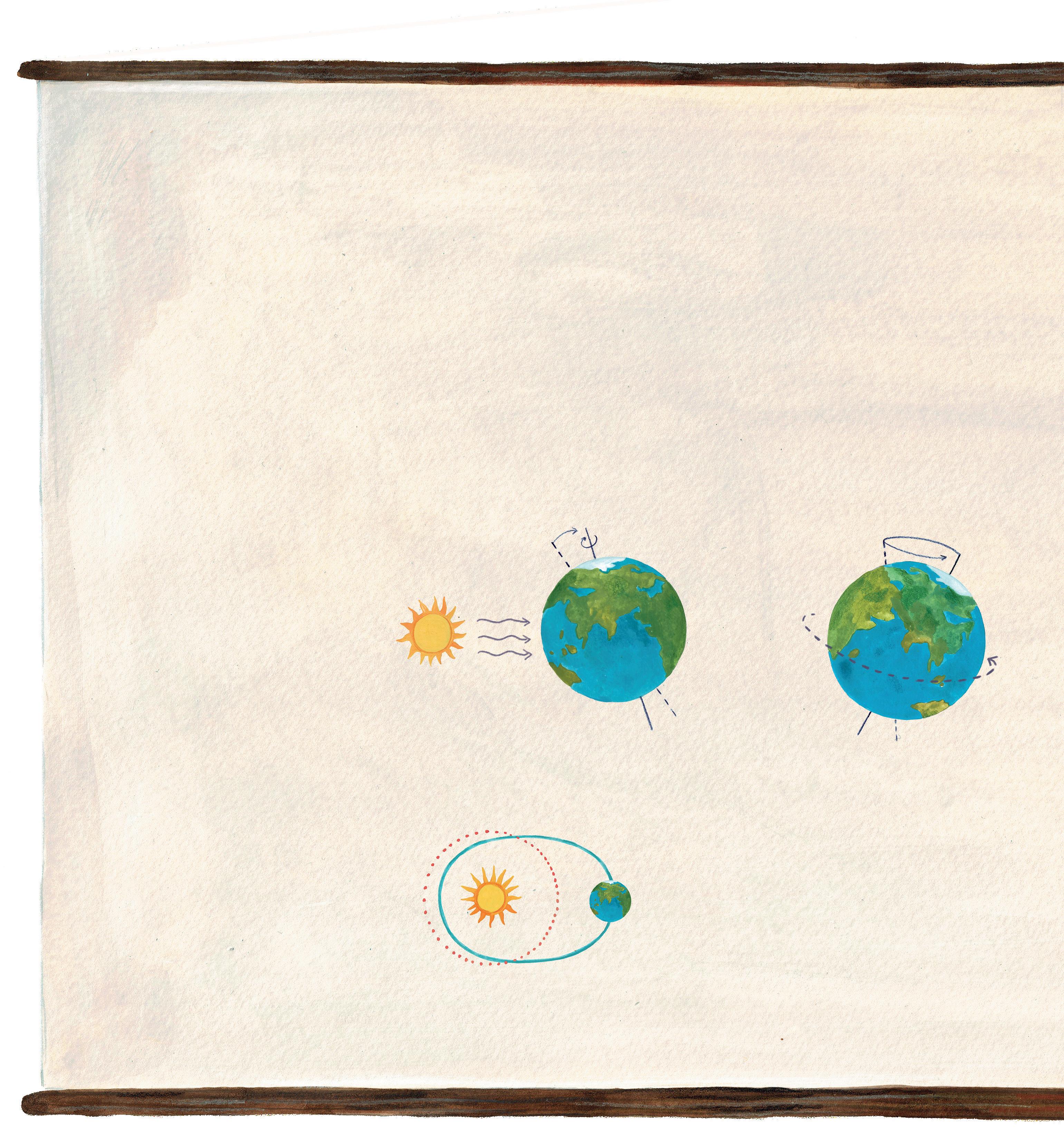


Another thing that can affect Earth’s temperature, but that isn’t part of the Milancovitch cycles, is called the Albedo Effect. This happens when large areas of the Earth are covered with ice. Pale surfaces like ice or snow reflect more heat than dark, bare soil, so this ice causes the planet to cool down.

Climate change can have a big impact on biodiversity. For example, giant animals once roamed North America but became extinct around 10,000–45,000 years ago. Some scientists believe that this extinction was probably caused by climate change and others think that hunting by humans also contributed.
Greenhouse gases occur naturally, but during the last 200 years, the level of two of these gases has dramatically increased. This is largely due to human activities. For example, the burning of fossil fuels (coal, oil and gas), for electricity, heating and to power vehicles, releases carbon dioxide. Also the increasing demand for meat and dairy products means that more animals are farmed. These animals release digestive gasses (burps and farts), that include methane. The increase of these greenhouse gasses has led to the current climate crisis.

After the Permian mass extinction, many new living things evolved. While some reptiles invaded the sea, dinosaurs large and small started to conquer the land. Earthquakes and volcanic eruptions caused Pangaea to split in two. Large oceans began to form between these landmasses, which led to more rainfall as water evaporated along the newly formed coastlines.
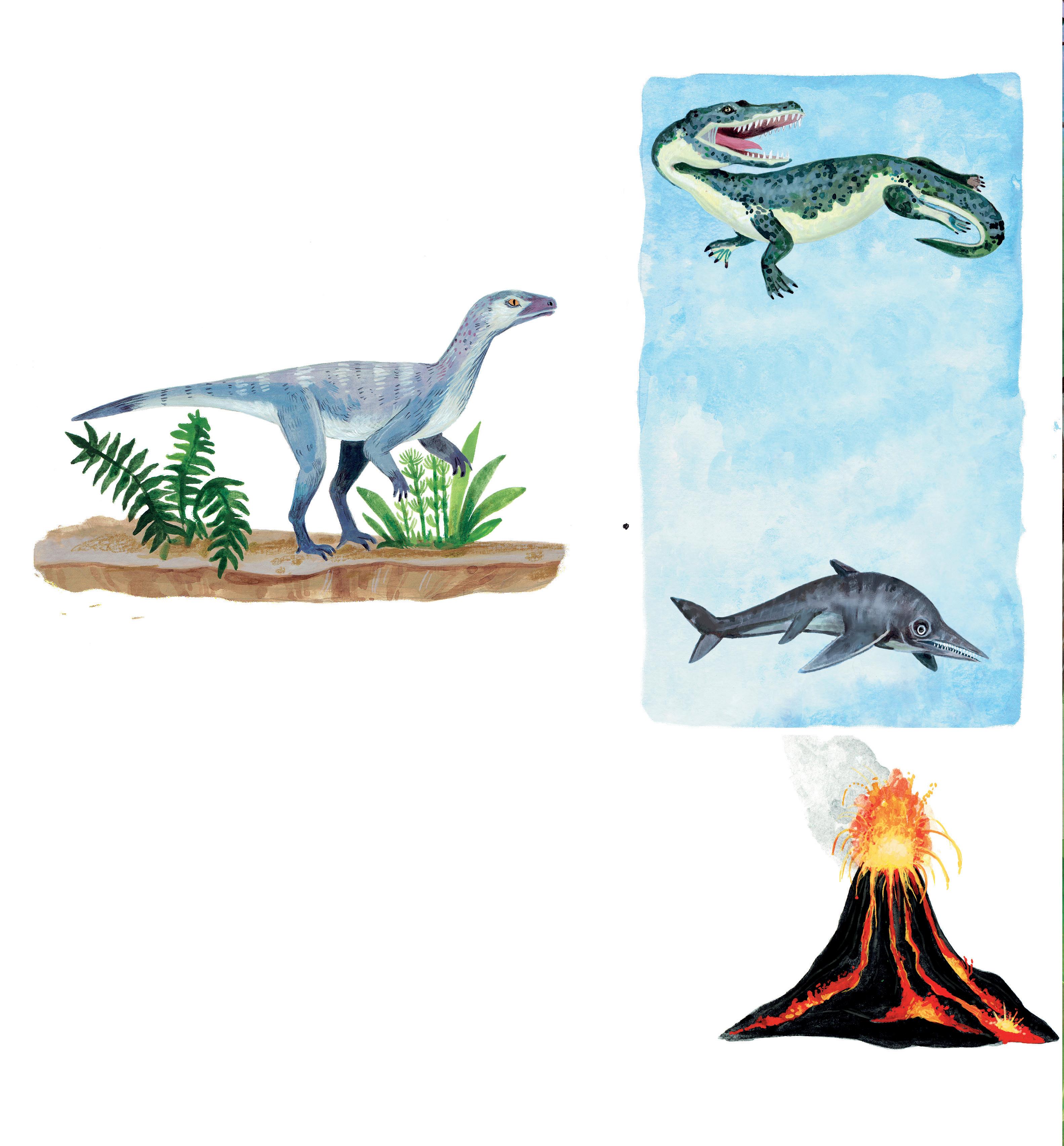


One group of reptiles that could swim and hunt for fish to eat were called nothosaurs (251–200 MYA). They could also crawl onto land to warm up in the sun and lay eggs. Ichthyosaurs (251–65.6 MYA) however, spent all their lives in the water. They were the largest marine reptiles of all time, and they grew up to 20 metres long – almost twice as long as a bus.





Eoraptor was a 1-metre-long dinosaur with light, hollow bones. It was an agile hunter who preyed on insects and small reptiles.
Dinosaurs were a group of reptiles, but they had certain features that set them apart. Unlike most reptiles' legs, which were sprawled out to the sides, dinosaurs' legs were directly beneath their bodies, giving them an upright stance. These straight legs could support a heavier body and allow for swift movement. Dinosaurs lived on land and laid hard-shelled eggs. Some also had small, coloured feathers.
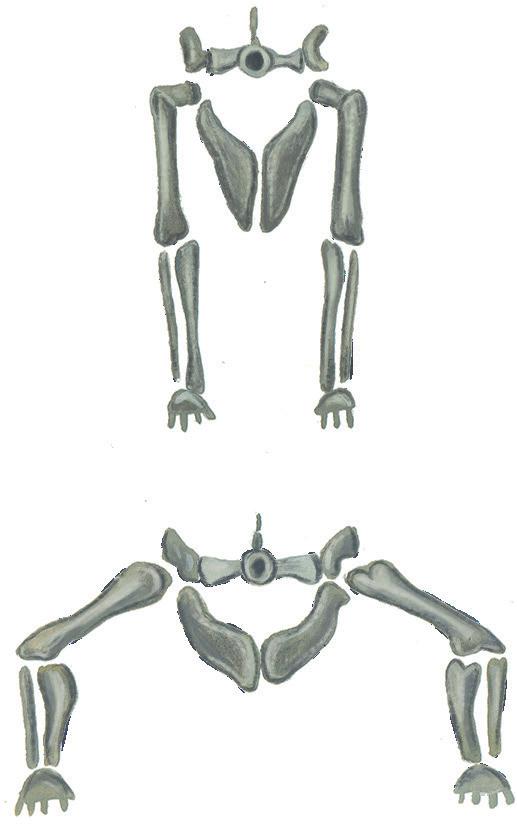
Around 201 MYA

At the end of the Triassic, volcanic eruptions released massive amounts of greenhouse gases, causing sudden global warming. This led to the extinction of many animals. It is not known why, but dinosaurs survived. They would go on to become the dominant land animals of the Jurassic and Cretaceous.

201–65 MYA ENORMOUS VEGETARIANS

Sauropods were the tallest dinosaurs that we know of. Plant eaters, such as Giraffatitan and Diplodocus, had extremely long necks for reaching leaves high in the treetops. Their constant munching changed Jurassic landscapes by creating open forests.
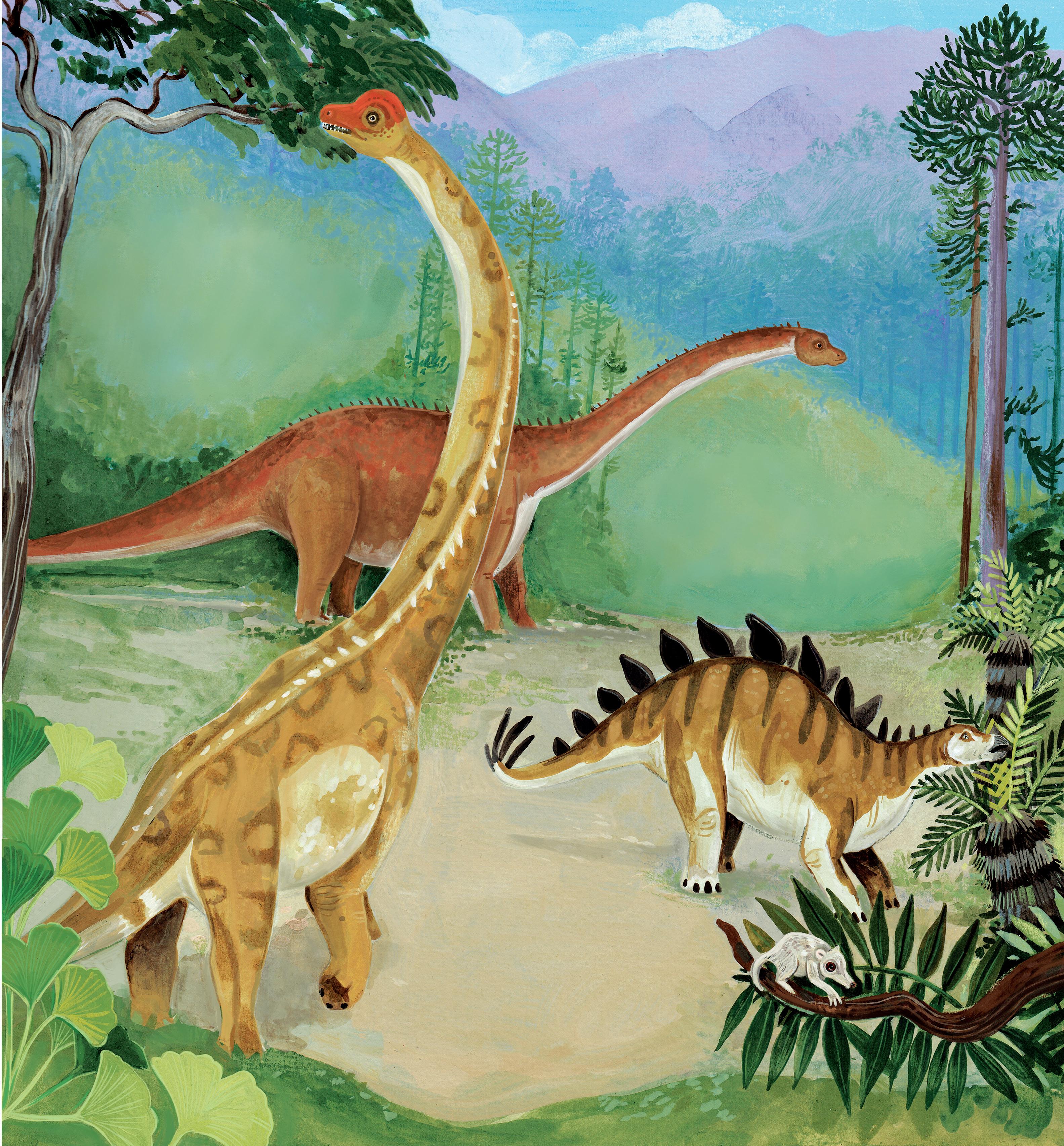
Ginkgo tree

ANUSUYA CHINSAMY-TURAN (1962–present) studies dinosaur bones under the microscope. She found out that dinosaur bones show growth rings (just like trees do). By counting the rings, she came up with a system to estimate the age of individual dinosaurs.
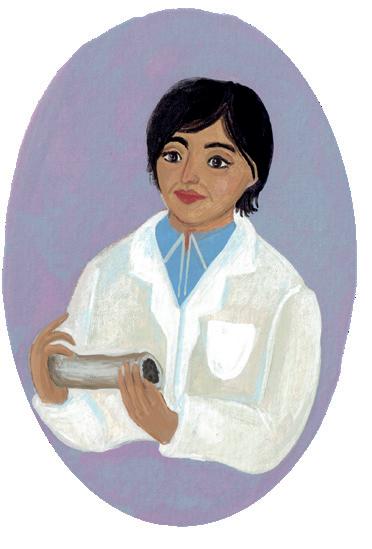



Around 155–145 MYA
Stegosaurus was a herbivore that had bony plates along its back. The plates could have made the dinosaur appear larger and helped it to scare off predators. Or they could have been used to regulate its body temperature by warming its blood in the sunlight or releasing heat to cool down.
200




Early mammals were very small. Morganucodon, for example, only grew up to 10 centimetres long. It had back teeth that interlocked when its jaw closed. This feature is shared by all mammals and allows them to chew their prey. Reptiles on the other hand, are unable to chew and just gulp down their food.
Morganucodon
The Earth has come a very long way from the molten planet with oceans of magma that existed 4.5 billion years ago. Since then, the land has shifted, the climate has changed and life has flourished. But how exactly did living things come to be?
Let authors Sarah Darwin and Eva Maria Sadowski enlighten you about the fascinating facts of evolution: what it is and how it works. Dive into the history of life on Earth and learn about the theory of natural selection that Sarah’s great-great-grandfather, Charles Darwin, and naturalist Alfred Russel Wallace came up with together. In this beautifully illustrated book, feature spreads explain the important things that you need to know and a timeline plots the history of life on Earth.
Nature lovers will be delighted by this in-depth tour of life that leaves no stone unturned and will keep children (and adults) enthralled for hours. Find out how plants, humans, pet dogs and everything else came to be and what this might mean for our future.

Sarah Darwin and Eva Maria Sadowski

8+ years £16.99 Hardback 64 pages 280mm x 260mm Pub Date: 7th Sept 2023 ISBN: 978-1-912920-53-2
• Co-authored by Sarah Darwin, Charles Darwin’s great-greatgranddaughter, and Eva Maria Sadowski.
• Stunning, luscious artwork throughout brings each page to lif everything from bacteria to dinosaurs and giant fungi to gingko trees.
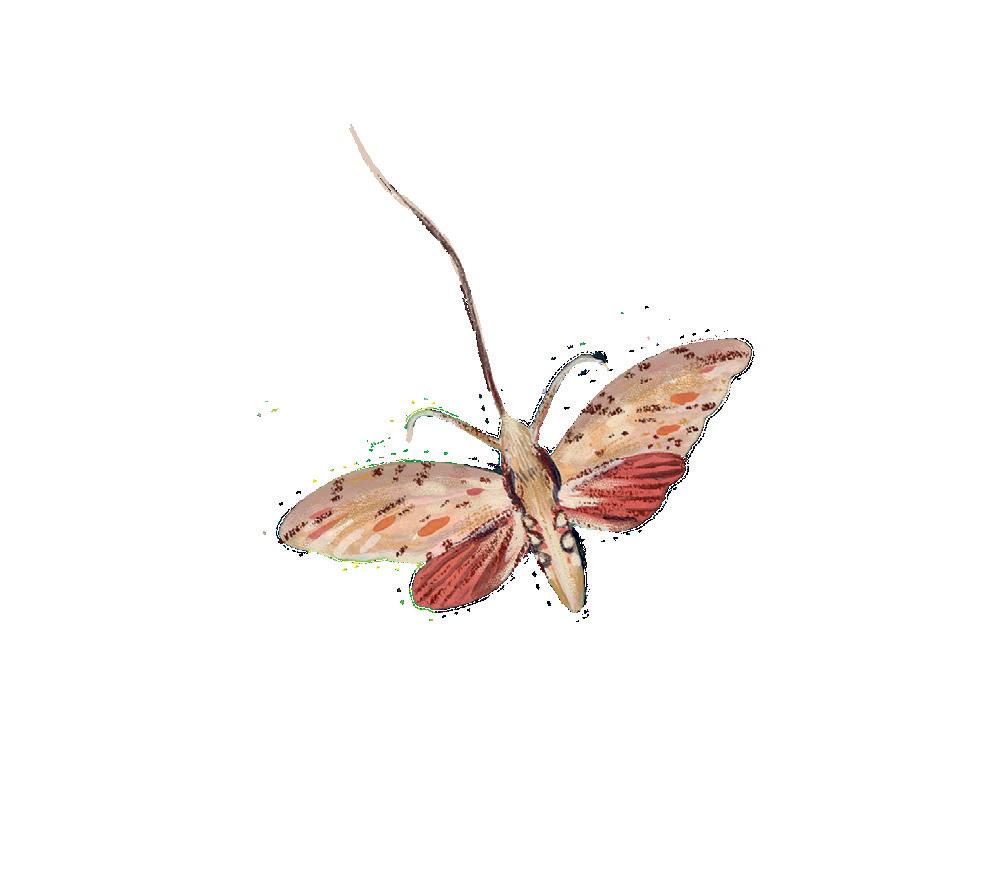
• Offers an in-depth look at evolution, helping curious kids un and engage with the world around them.
DR. SARAH DARWIN originally trained as an artist and then as a scientist, specialising in botany. She spent several years living and working in the Galápagos Islands and studying the Galápagos tomatoes there. More recently she has been part of a project in Berlin studying nightingales. Sarah is the great-great-granddaughter of Charles Darwin and works at the Museum Für Naturkunde, Berlin.
DR. EVA-MARIA SADOWSKI is a palaeobotanist, who mainly studies plant remains that are enclosed in amber. Eva lives in Berlin and works at the Museum Für Naturkunde, Berlin.

OLGA BAUMERT is an artist, illustrator and graphic designer. Originally from Poland, she studied Fine Art and Jewellery before moving to the UK where she received her degree in Graphic Design and Illustration at De Montfort University. Olga currently lives and works in Leicester.
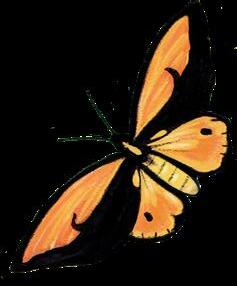
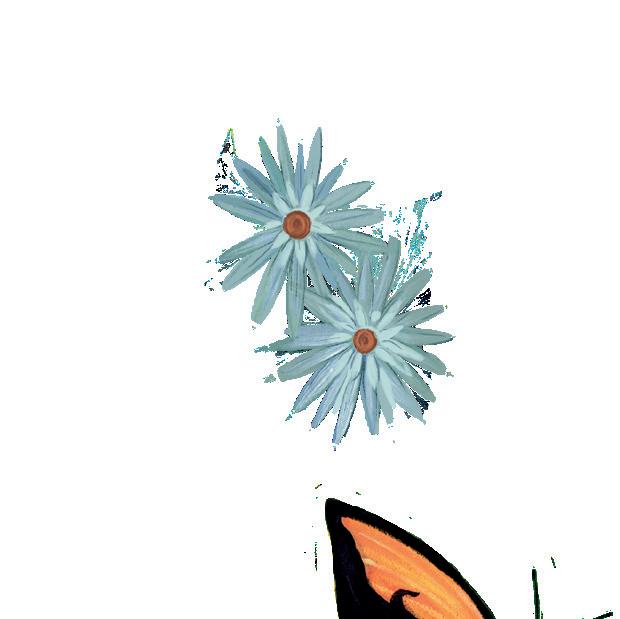
BOUNCE SALES & MARKETING – 320 City Road, London EC1V 2NZ Tel: 020 7138 3650 | Fax: 020 7138 3658 sales@bouncemarketing.co.uk
ORDERS – Grantham Book Services, Trent Road, Grantham, Lincolnshire NG31 7XQ | Tel: 01476 541000 | Fax: 01476 541060 orders@gbs.tbs-ltd.co.uk
WHAT ON EARTH PUBLISHING – Allington Castle, Castle Road, Maidstone, ME16 0NB | Tel: 01732 464621 info@whatonearthbooks.com | whatonearthbooks.com